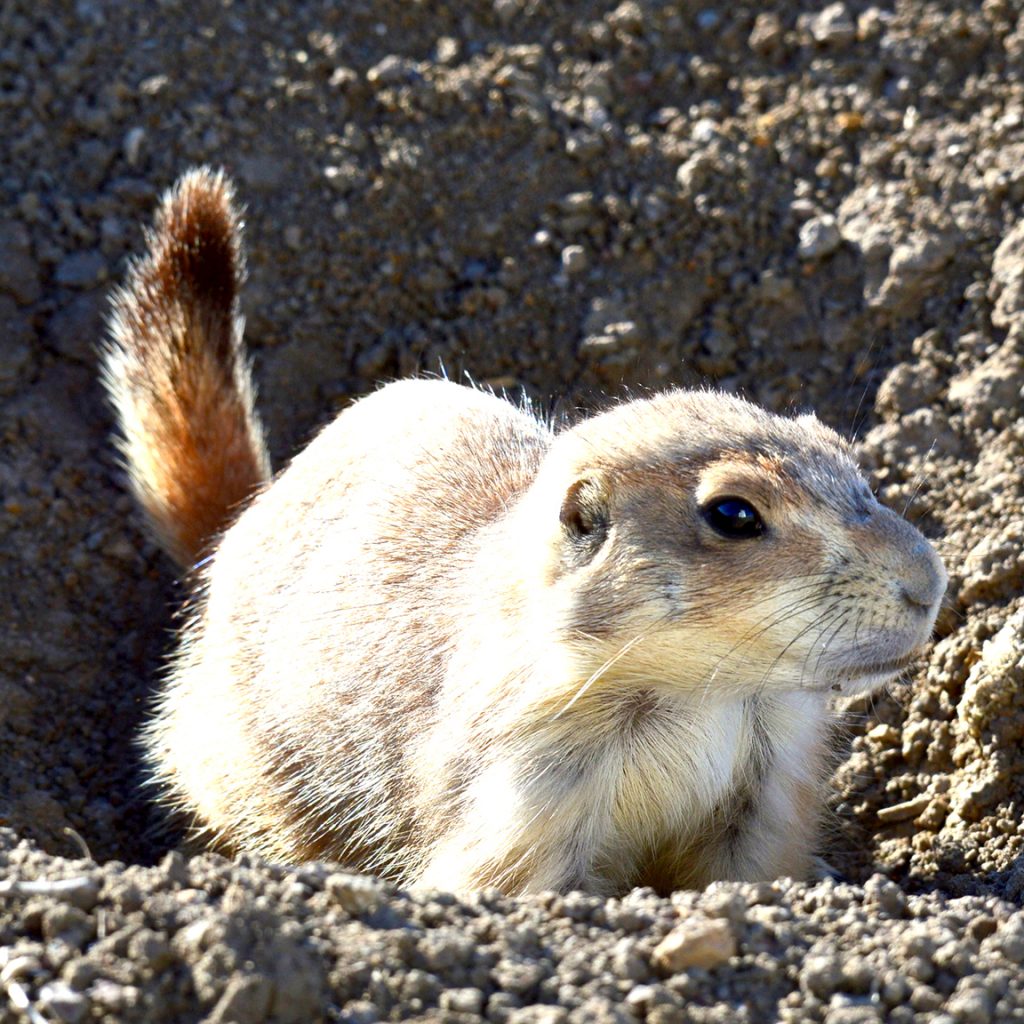
There are five families of prairie dogs: black-tailed, white-tailed, Gunnison’s, Utah, and Mexican prairie dogs (all of which live in North America). Black-tailed prairie dogs live in western New Mexico, and Gunnison’s prairie dogs live in eastern New Mexico. They weigh about 1-3 pounds, and they are about 11-16 inches long. Prairie dogs are preyed upon by badgers, coyotes, foxes, bobcats, golden eagles, and different species of hawk. Sometimes rattlesnakes and bull snakes eat young prairie dogs. Prairie dogs have sharp teeth to chew through their food, strong hind legs so that they can see over the grass, and pointy claws to dig their burrows. Prairie dogs also have acute vision to search for predators hiding among the grass, and brown fur so that they can blend into the dirt.
Prairie dogs are not so different from humans in the way their burrows are composed. There is an underground network of tunnels and rooms which makes the prairie dog equivalent of towns. The “towns” are made up of “neighborhoods” and each “neighborhood” is made up of some “houses.” When they dig their burrows, prairie dogs include air pockets so that the chamber will stay dry if there is a flood. Prairie dogs also build a mound a little ways away from the mouth of their burrow so they have a better view over the grasslands they call their home. All species of prairie dog hibernate except Black-tailed prairie dogs. Some people claim to see prairie dogs kiss, but they are actually smelling each other. Some prairie dogs carry the bubonic plague, which spreads through their fleas. The plague spread through their population, decimating their numbers. These are just some of the interesting things to learn about prairie dogs. by Lali Miller

